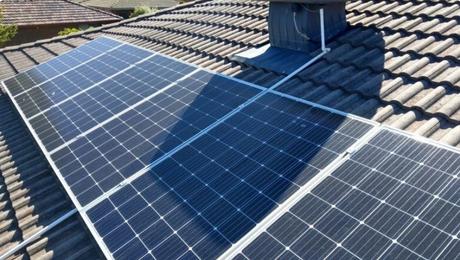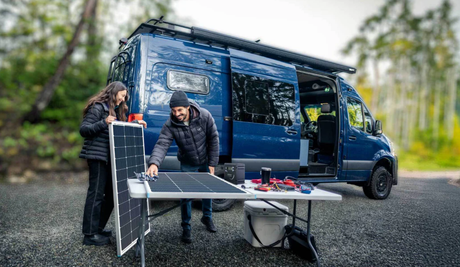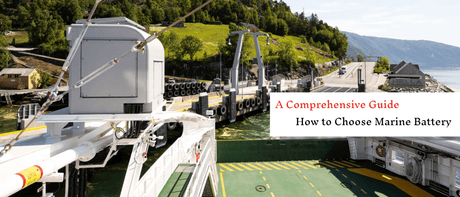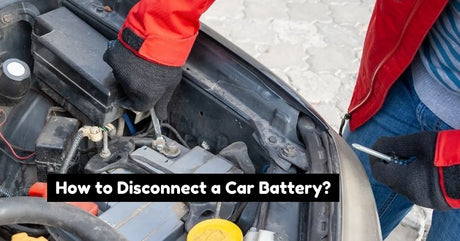How do I select the right deep cycle battery for my solar installation?
Imagine yourself parking your RV for the night in a beautiful, remote area. There’s no one around for miles. You flip a light switch and the lights turn on. You run the microwave, charge your laptop, and power up a fan. You smile and appreciate the peace and quiet. Not a generator in earshot. Although it may sound like a dream, all of this is definitely possible with battery storage with a solar installation.
It’s easy to see the many ways solar installations can improve your quality of life while camping. Battery storage makes that all possible. When shopping for the right battery, there’s a range of important considerations to keep in mind, including your battery type, voltage, capacity, cycle life, and price. How do you decide on the best solar battery for your system, and what size battery bank do you need to meet your needs?
Which batteries are best for solar?
When shopping for batteries for your solar installation, you’ll want to look at deep cycle batteries. which are designed to provide a sustained period over a longer period of time. There are a few different types of deep cycle batteries. The most common ones used for solar installations that you’ll encounter are flooded lead acid, sealed lead acid, and lithium iron batteries. When assembling a battery bank, you’ll want to use batteries of the same type and amp hour. This limits any efficiency loss due to having different batteries.
If you live in an RV, camper, or home without access to the electrical grid or want to be off-grid, battery storage can be a great fit for you and your lifestyle.
What should I consider when deciding on a battery for my solar panels?
Voltage: Soar installations can be sized as 12, 24, or 48 volt systems. Batteries and solar panels typically come in either 12V and 24V options. Most RV’s and boats are typically wired for 12V battery banks, so people looking to install solar on those applications often stick with 12v panels and batteries. Most of Renogy’s batteries are 12v batteries.
Many larger home systems are rated at 24v or 48v. If your energy needs are around 1,000 to 5,000 watts, we recommend opting for a 24 volt system. If your energy needs are over 3,000 watts, install a 48 volt system.
Capacity: Battery capacity is the amount of energy that can be stored in a battery. If you have large appliances that draw energy over longer periods of time, you’ll need more batteries to meet that demand. Battery capacity is measured in total amp hours.
Cycle Life: This refers to the number of discharge and charge cycles a battery can provide before the capacity drops below the rated capacity. This varies sharply from technology to technology and is measured in the number of cycles.
Price: Depending on the technology, prices between batteries can vary greatly. Be sure to consider the ultimate lifetime and not just upfront costs of a battery. For example, you’ll have to replace and maintain a flooded lead acid battery much more than you would a lithium iron battery.
What are the different types of deep cycle batteries?
Flooded lead acid batteries are the cheapest battery option, but they also require the most maintenance and are the least efficient. Flooded lead acid batteries contain a combination of a liquid electrolyte, and the liquid in these batteries must be carefully measured and maintained to ensure a healthy, long-lasting battery. They also emit gases, so it’s important that they are housed in a well-ventilated room.
Sealed lead acid batteries require little to no maintenance, are spill-proof, and are more efficient than flooded lead acid batteries. With that added convenience as well as a longer cycle life comes a higher price tag. Contrary to flooded lead acid batteries, there’s also no access to the inside compartment where you need to add water.
There are two main types of sealed lead acid batteries: absorbed glass mat (AGM) and gel batteries. Gel batteries, which use silica to stiffen the electrolyte solution in the battery, tend to have lower charger rates and output than absorbed glass mat batteries. They also can’t handle as much current, meaning they take longer to recharge. Gel batteries have a greater lifespan than AGM batteries. AGM batteries are the cheaper of the two and they also offer a better temperature range.
Lithium iron phosphate batteries are the most advanced and expensive battery type. For those who place a premium on efficiency and portability should consider lithium iron phosphate batteries.. They are compact and lightweight, have an extremely long cycle life, and high discharge and recharge rates. They also require little to no maintenance. Lithium batteries typically have a lifespan of at least 10 years and lose less capacity when idle than other battery types.
How do I size my battery bank?
Properly sizing your system is very important, especially in off-grid systems where you are relying solely on your installation and battery bank to keep your lights on. To size a system that will best fit your needs, we recommend using the Renogy solar panel calculator to determine your specific energy needs.
You’ll want to size your battery bank based on your energy usage. Energy usage is measured in kilowatt hours. For example, if you need 1000 watts for 4 hours per day, then your energy usage is 4kWh per day. Using the Renogy solar panel calculator will help you decide on the right sized battery bank for you.
Conclusion
Whether you’re living off the grid on the open road or deep in the woods, a deep cycle battery bank is a powerful, efficient, safe, sustainable, and quiet way to ensure you have reliable energy access when you need it most. Taking the time to learn about the different battery types and characteristics and how to size your system will ensure you have a powerful system that meets all your needs.











